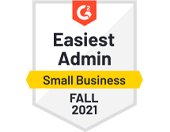Introduction
The chances are when you were starting out, you wanted to focus on getting your business off the ground and not on day-to-day HR issues so you decided to outsource your HR functions to a PEO.
Now you are a growing company, your headcount has gone up, maybe north of 50 employees. You are seeing the cost of the PEO going up and their service may be stagnating or reversing. You are wondering is it the right time to leave the PEO and bring your HR function in-house?
There is not an easy answer to this question because things vary so much from one company to another. In this article, we will provide you a framework you can use to make this decision.
The decision to leave the PEO will come down to your decision with respect to the following three major items:
- Providing Medical Benefits to your employees
- PEO Customer service
- PEO Fees
Medical benefits
One of the important advantages which a PEO offers is the lower cost of providing medical benefits for groups which are very small, say less than 10 employees and/or have someone in the team with a major medical condition which will cause rates to shoot up if the group is insured on its own in the open market. This is because, as part of the PEO, the group is insured under the master plan of the PEO where the risk is spread across a large number of employees.
This advantage turns into somewhat of a disadvantage as the employee headcount starts to grow. Let us say the company now has more than 50 employees. At this headcount, there are so many options in the open market available to the group for their health insurance needs. These may range from self-insured plans to level funded plans to fully-insured plans and many more. These options allow the employers to find a health insurance solution that best meets their employees needs. A PEO with their master plan just can not match that.
PEO Customer Service
When you are small, say around ten employees, your HR needs are limited. All you care about is that your employees get paid on time, employee taxes are filed on time, employees have benefits etc. A PEO can do all this quite well. Plus when you are small, you really can not afford to have a dedicated HR person inside the company so it works out well. When employees have issues on HR related matters, they reach out to the PEO and get their issues resolved even if it takes a little longer.
However when you start to grow, your HR needs become more complex. You start to think about the culture of the company, employee engagement, employees training and growth. You may hire people in different states. Your employees have lots of questions/issues related to benefits, PTO, payroll etc. When you or your employees reach out to the PEO to resolve some of these issues, they don’t get timely responses, sometimes they get a runaround. You soon realize that the PEO service level is not meeting your expectations and it triggers the decision to bring the HR function in-house.
PEO Fees
When you are small, you justify paying the high PEO fee, as much as $125 PEPM (Per Employee Per Month), because of savings on cost of benefits as well as savings because you don’t need inhouse HR team.
However, as mentioned above, when you reach a certain team size, let us say 50 employees, you can get a better deal on benefits in the open market plus you also need inhouse HR team to manage the complexities of a large team. With the savings in benefits gone and increased cost of hiring in-house HR team members, it is hard to justify the high cost of the PEO. In our experience, some clients have saved as much as 60% when they transitioned out of their PEO.
Things to consider when transitioning out of a PEO
If you have made the decision to leave your PEO, here are some things to consider to reduce your risk.
Best time to leave the PEO is at the end of the year
There are tax implications of leaving your PEO mid-year. Because all your taxes get reset at the start of the year, the best time to leave the PEO is at the end of the year.
Recommended Reading: What Are The Tax Implications Of Leaving Your PEO Mid-Year?
All-in-one Payroll HRIS Benefits platform
When you were with the PEO, they might have provided you access to their technology platform for all your HRIS needs. Now that you are leaving the PEO, you should look for a technology vendor like UZIO that can provide you with an all-in-one solution for payroll, HRIS, Benefits, Time Tracking etc.
Maturity of your HR team
If you are bringing the HR function in-house, it is essential that you have a strong HR team. At the minimum, you will need a strong HR generalist to manage your HR function in-house. If you are not ready to hire one, you can lean on your HRIS technology provider to provide a part time HR executive to you.
Benefits Broker
You should partner with a benefits broker that can take care of all your insurance needs from health insurance to worker comp to employers liability insurance (ELI) etc. Ideally your technology platform vendor should take care of all your insurance needs thru their internal brokers or thru their broker partners.
At any point in time if you feel like connecting with us in this respect, our team is there to help. You can use the link below to book a call with us.
Conclusion
Leaving a PEO is a major decision for the company. There is no arbitrary employee headcount number you can use to make this decision. The framework provided above should help you in making this decision.
Get in touch with us for an expert-led demo to know more about UZIO payroll services.















